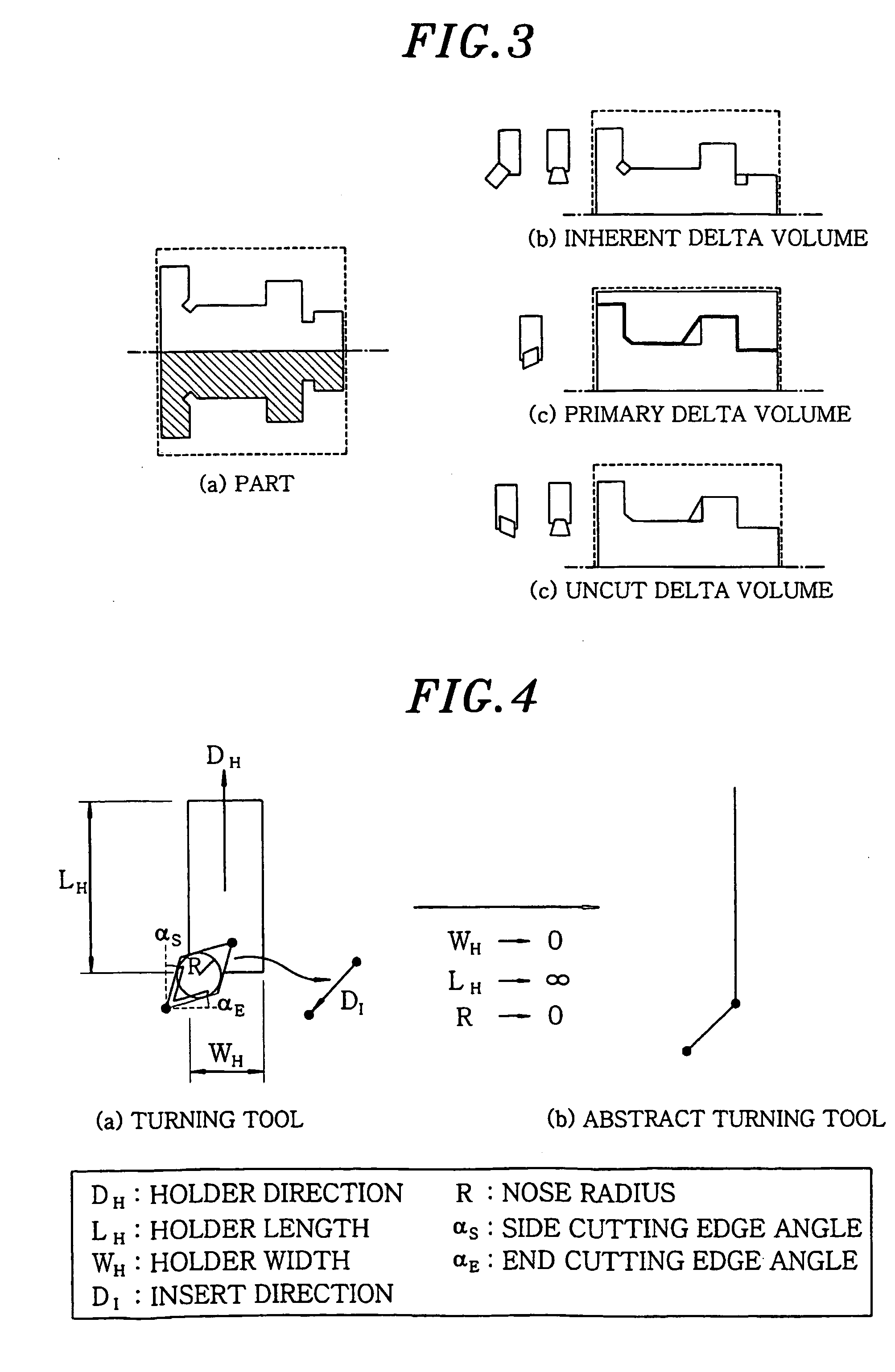Method for performing delta volume decomposition and process planning in a turning step-nc system
a step-nc system and process planning technology, applied in the direction of programme control, instruments, total factory control, etc., can solve the problems of delta volume decomposition that is not suitable for cutting with the cutting tool, needs post-processing, and system does not support an interface for inputting/outputting a cad fil
- Summary
- Abstract
- Description
- Claims
- Application Information
AI Technical Summary
Benefits of technology
Problems solved by technology
Method used
Image
Examples
Embodiment Construction
[0053] A finished part to be machined in a turning machine may be represented by using a profile thereof. A shape of a part, which is cut away during the turning process, varies depending on a cutting tool to be used in cutting the part. The recognition of the parts to be machined can be accomplished through a decomposing of a delta volume, i.e., a material that must be cut away during the actual machining process. Since the finished part is symmetric with respect to an axis and is cut by revolving the axis and moving a cutting tool two-dimensionally with respect to the axis, the delta volume can be represented by a two-dimensional profile thereof.
[0054] Turning characteristics to be considered in determining the delta volume are as follows. Firstly, a cutting tool must remove as much delta volume material as possible. Secondly, a delta volume is determined based on the type of the cutting tool. That is, in a raw stock, a feasibly cuttable volume and an uncut volume are determined....
PUM
| Property | Measurement | Unit |
|---|---|---|
| Volume | aaaaa | aaaaa |
| Surface roughness | aaaaa | aaaaa |
Abstract
Description
Claims
Application Information
 Login to View More
Login to View More - R&D
- Intellectual Property
- Life Sciences
- Materials
- Tech Scout
- Unparalleled Data Quality
- Higher Quality Content
- 60% Fewer Hallucinations
Browse by: Latest US Patents, China's latest patents, Technical Efficacy Thesaurus, Application Domain, Technology Topic, Popular Technical Reports.
© 2025 PatSnap. All rights reserved.Legal|Privacy policy|Modern Slavery Act Transparency Statement|Sitemap|About US| Contact US: help@patsnap.com



